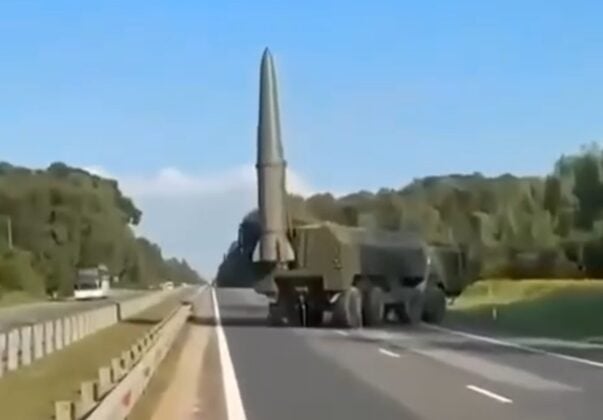
Russia has conducted a simulated missile strike on Polish territory as part of its large-scale joint military exercise with Belarus, known as Zapad 2025.
The drill scenario involved the use of Iskander ballistic missile systems deployed from the Kaliningrad region.
According to the exercise script, Russian missile units moved to designated launch positions with the objective of carrying out a retaliatory strike in response to what was described as “aggression from an enemy state.” Observers noted that the missile launchers were positioned directly on public roads with raised missiles, ready to fire, prompting road closures to secure the area.
The maneuvers represent a tactical rehearsal for rapid deployment and strike capability against potential targets in NATO territory, most notably Poland and the Baltic states. The exercise was conducted in close coordination with Belarusian forces and has been described by regional observers as provocative and coercive in nature.
Western analysts have long warned that Zapad exercises serve both strategic and political functions. They are seen not only as training for large-scale combat operations but also as tools of intimidation aimed at neighboring countries.
NATO’s eastern flank has been increasingly vocal about the threats posed by Russia’s military activity near Alliance borders. The simulation of missile launches toward Poland—one of NATO’s key forward-positioned members—will likely further increase calls for reinforcement of the Alliance’s defense posture in the region.
Moscow has claimed the drills are defensive in nature. However, the decision to rehearse missile operations targeting a NATO country marks an escalation in both rhetoric and battlefield preparation.
As the Zapad 2025 exercise continues, the presence of nuclear-capable Iskander systems in public view adds to concerns about Russia’s use of military demonstrations as instruments of psychological pressure. NATO officials have not publicly commented on the simulated strike but have previously described similar Russian activities as destabilizing.
This provocative maneuver follows a recent incident in which 15 Russian drones crossed into Polish airspace from the directions of Belarus and Ukraine. The cross-border UAV incursion, viewed as a violation of sovereignty, further elevated tensions in the region and added context to Russia’s choice of Poland as the simulated target.